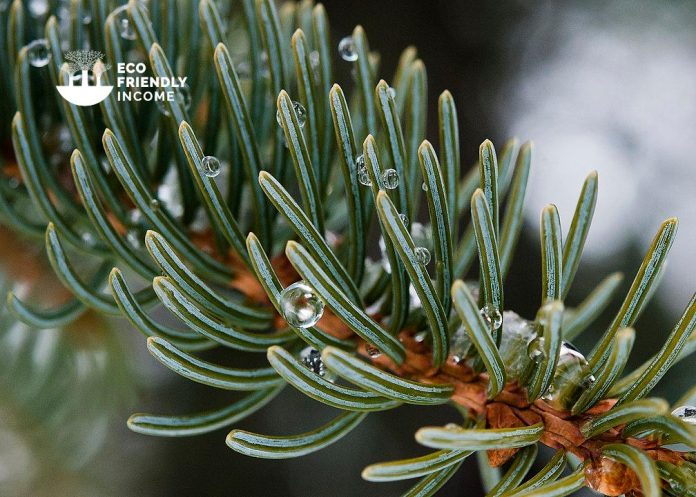A field guide on how to identify and propagate White Spruce (Picea glauca), a hardy tree that is native to much of the Northern Canadian & American Forests.
How to Identify White Spruce (Picea glauca)
Leaves
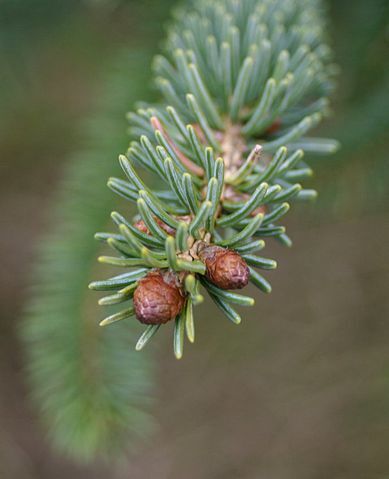
White spruce needles are linear-shaped, with entire margins (smooth). They grow on the stems in alternate arrangements.
White spruce needles are thick and round, if you were to pluck one and pinch it between your fingers, you could roll it.
It’s a good way to tell fir apart from spruce, fir needles are too flat to easily roll between your fingers.
On the other hand, compared to black spruce, white spruce needles are longer at about 1.5-2.5 inches.
Bark
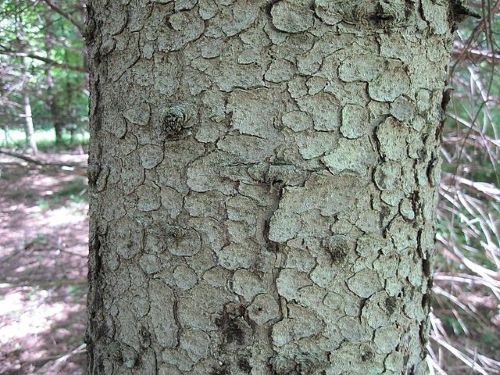
The bark of young white spruce trees is thin and gray in color, with a tendency to flake off in scales. As the tree matures, its bark becomes looser, and scalier, and takes on a grayish-brown hue.
Cones
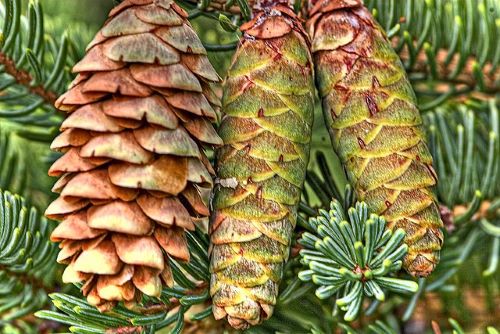
The seed cones of White Spruce are light brown to purple in color and can be found hanging from the upper branches.
They have a smooth, rounded outer edge on the seed scales, and the pollen cones are pale red.
If you were to measure them, they should be around 3-7cm each.
Flowering Season
Pollen cones appear first on white spruce, usually during spring to early summer.
Seed cones appear on the tree during summer and mature by late summer to early autumn.
Habitat
White spruce is a prevalent tree species in Canadian boreal forests, growing in areas with well-drained soil, near riverbeds and alluvial plains, as well as in soil from glacial and lake-origin areas.
Some other understory plants that associate with white spruce are:
- Highbush Cranberry (Viburnum trilobum)
- Currant (Triste sp.)
- Wild Rose (Rosa acicularis)
- Bunchberry (Cornus canadensis)
- Bluebead (Clintonia borealis)
Wildlife Value
The recently burned white spruce forests are inhabited by black-backed and three-toed woodpeckers.
White spruce is a preferred food source for some birds and small mammals, with snowshoe hares eating its resin buds and new growth.
Red squirrels in interior Alaska eat white spruce buds when seeds, their primary food source, are unavailable.
Deer mice, northern red-backed voles, meadow voles, and shrews also eat white spruce seed after it is dispersed.
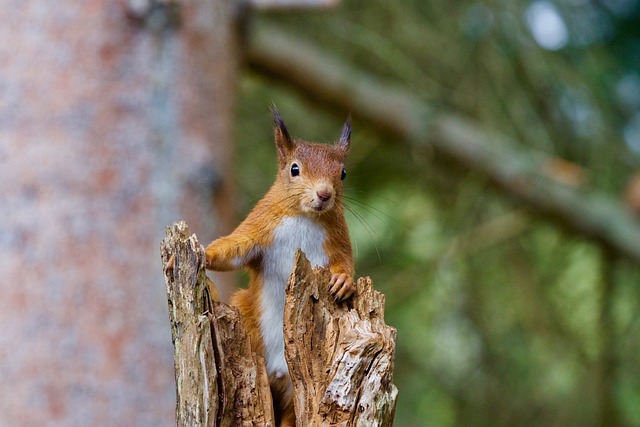
How to Propagate White Spruce (Picea glauca)

Hardiness Zone: 2-6

Soil Type: Clay, loam, sand.

Water: Normal

Exposure: Full Sun to Partial Shade.
You can propagate white spruce with two methods:
- Stem Cuttings: It provides established trees faster, but is tricky, and will probably have a lower success rate.
- By Seed: The success rate is high but takes longer to get established saplings.
Seeds are by far the superior method, but if you’re still interested in stem cuttings, perhaps take a look at our cutting propagation guide for more info.
Let’s take a look:
How to Propagate White Spruce (Picea glauca) by Seed
White spruce seeds should be quite easy to get since it’s widespread in most northern forests.
It’s as easy as going out on a hike, identifying the tree, and collecting the cones.
How to Harvest Seeds
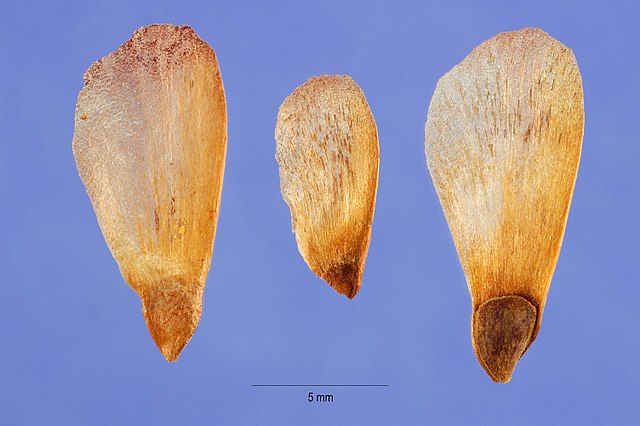
The best time to harvest white spruce cones is from late summer until mid-autumn.
The trick is to collect them when they are mature, but haven’t naturally opened yet.
Once you have your cones, to get them open, all you need to do is place them in a dry area.
For example, a brown paper bag will be perfect for them to dry and it will catch any seeds that might fall during the drying process.
Dried cones will have opened up, from there, just knock the seeds out of the cones.
Stratification & Sowing
For optimal germination of white spruce seeds, cold stratification is recommended. The steps are:
- First, label a bag and add moist sand or vermiculite and seeds.
- Then, store the bag in the freezer for 30 days.
- Move the bag to room temperature water for 12 hours.
- Place the bag into your refrigerator for another 14 days.
- Next, plant seeds in a peat moss and sand mixture, water gently, and cover with plastic wrap.
- Finally, seeds should germinate within a week after this process.
FAQ
Q: How big does a Picea glauca grow?
A: White spruce usually reaches a height of 60 to 80 feet, although it can occasionally grow up to 140 feet with a conical-shaped crown.
Q: Is Picea glauca a Christmas tree?
A: Yes, white spruce, along with balsam fir, are popular choices for Christmas trees.
Q: How often should I water my Picea glauca?
A: Potted white spruce should get watered deeply at least once every 9 days. Make sure the pots drain well.
Q: Where do white spruce trees grow best?
A: White spruce is capable of thriving in diverse soil and moisture conditions, with optimal growth on well-drained, fertile soils with ample moisture. It is not ideal in areas with stagnant water. The tree is able to adapt to a broad range of soil pH, from acidic (4.5) to alkaline (7.5).

